After reading Conor’s post in which he showed us how to prepare delicious roast leg of goat, I got curious and wanted to try goat meat, too. Now there are a lot of goats in the Netherlands, kept primarily for milking, but since there is no local market for the meat it all gets exported. And so although lamb is easily available everywhere, I’ve never seen goat at a butcher’s, let alone a supermarket. But some googling revealed that there is a goat farm in Amsterdam that sells goat meat to the public. Unfortunately it is frozen, but that is better than no goat at all and so I came home with a nice piece of goat neck with beautiful marbling. It is meat from a young goat that is between 5 and 7 months old (called “chevon” in the Netherlands). (Click here to find out where to buy goat meat in the Netherlands.)
I didn’t have to think very long about what to do with it, as Italian cuisine is always my first port of call when I am thinking about how to prepare something. In the town of Nereto in Abruzzo, goat is stewed and then served with fried bell peppers and pearl onions. That sounds great, and so that is what I did with my first attempt at preparing goat. It came out delicious, similar to lamb but not quite. If you can’t find goat, you could easily substitute lamb in this recipe. I cooked the goat sous-vide, but stewing on the stovetop or in the oven is also possible.
As with all Italian traditional recipes, there are many versions of capra alla neretese. The constant factors are goat meat (duh!), bell peppers, tomatoes, onions, and wine. Other common ingredients are rosemary and cloves. The wine can be either white (Trebbiano d’Abruzzo, which by the way is not the same grape variety as Trebbiano Toscano, also known as Ugni Blanc) or red (Montepulciano d’Abruzzo, not to be confused with sangiovese-based Vino Nobile di Montepulciano). I opted for the red, since I thought it would be nice to drink the balance of the bottle with the dish.
Ingredients
For 2 servings
450 grams (1 lb) goat neck, or other goat stewing meat
2 red bell peppers
250 ml (1 cup) tomatoes (fresh, passata or from a can, pureed in the food processor)
1 onion, minced
1 stick celery, minced
2 cloves
a handful of pearl onions (optional)
1 bay leaf
1 chilli pepper (fresh or dried)
1 sprig rosemary
2 strips of lemon peel (from an unwaxed lemon)
80 ml (1/3 cup) wine (Trebbiano d’Abruzzo or Montepulciano d’Abruzzo)
extra virgin olive oil
salt and freshly ground black pepper
Instructions
Cut 450 grams of goat stewing meat into cubes, pat them dry with paper towels, and season on all sides with salt and freshly ground black pepper.
Heat 3 tablespoons of olive oil in a frying pan or casserole, and brown the meat over high heat…
…on all sides.
Take out the meat and set aside on a plate.
You should never brown meat in a non-stick pan, because the most important reason for browning is to develop flavor. You should also always use the browned bits that get stuck to the pan during browning and include them in the dish.
To this end, add a minced onion and a minced celery stick to the pan, and season lightly with salt. Add two strips of lemon peel, a sprig of rosemary, a bay leaf, and a chilli pepper.
Stir over medium heat, making sure to scrape the bottom with a wooden spatula to include all of the flavor, until the vegetables are golden, about 10 minutes.
Deglaze with 80 ml of wine.
Add 250 ml of tomatoes.
To cook sous-vide, bring the sauce to a boil, then reduce the heat to a simmer.
If you are not cooking sous-vide, this is a good time to add the meat. Cover and cook over low heat, stirring, until the meat is tender.
Simmer the sauce until it is no longer watery.
Remove the rosemary, bay leaf, and lemon peel. (If you leave them in, they could overpower the flavor of the goat.)
Add the goat meat, stir to mix. If using a chamber vacuum sealer, allow the meat and sauce to cool to refrigerator temperature before vacuum sealing, as otherwise the low pressure will cause the contents of the bag to boil (as the boiling temperature is lower at low pressure), which is not good for the texture of the meat.
If using a ziplock bag, transfer the meat and sauce to the bag, and close it with as little air as possible using the water displacement method.
To transfer the meat and sauce into a bag, there are two tricks I use to do this cleanly:
- Fold the edge of the bag twice before filling the bag, so you have a clean ‘sleeve’ when you unfold the edge for sealing.
- Put the bag in a tall wide cylinder (like a big measuring jug) to keep it upright and open while filling it.
To vacuum seal in a chamber vacuum sealer, put the bag in the chamber with the sleeve extending past the sealing bar.
Close the cover and activate the vacuum sealer. At first it seems like nothing happens. The air is removed from inside and outside the bag, so it doesn’t collapse. This is also why you can vacuum seal liquids in a chamber vacuum sealer.
At the end, the bag is sealed and then the air is let in. The bag will now collapse.
And voilà: vacuum sealed goat with sauce. Cook this sous-vide for 24 hours at 74C/165F. This time and temperature will make the goat fork tender and give it the flaky texture of a traditional stew. The advantage compared to stewing on the stovetop or in the oven that it will always be consistently tender and moist and doesn’t need any tending, while a stovetop or oven stew will require you to monitor and stir regularly, and it may still end up tough and/or dry.
The next day, about an hour before you would like to serve the dish, start preparing the bell pepper and (optional) pearl onions. (You could also do this the same day you prepare the goat and reheat the peppers and onions to serve with the goat.)
Clean the bell peppers and cut them into large strips or chunks. Peel the pearl onions (which is easier if you blanch them first in boiling water). Heat 2 tablespoons of olive oil in a frying pan and add the bell peppers and onions. Season with salt and stir for a couple of minutes.
Cover the pan and lower the heat. Cook over low heat, stirring regularly…
…until the onions and peppers are tender, about 45 minutes. If you like the bell peppers to have more bite, start with the onions only and add the bell peppers later.
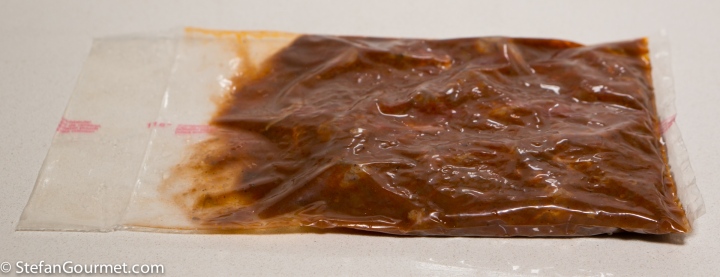
When the onions and peppers are done, take the goat out of the sous-vide.
Strain the juices into the pan with the peppers and onions using a sieve. Reserve the cooked meat.
Bring to a boil, then reduce the heat and simmer until the sauce has thickened.
Now add the meat to the sauce, and stir briefly over medium heat until just warmed through. Taste and adjust the seasoning with salt and freshly ground black pepper.
Serve on preheated plates. If you like, you could serve it with mashed potatoes (made Italian style with extra virgin olive oil instead of milk or cream).
Wine pairing
A wine from the region is always a good idea with dishes like this, and this Montepulciano d’Abruzzo worked very well indeed. To work well with a stew, it is best if the wine has had some years of bottle aging.
Flashback

Pasta with romanesco and sausage is simple and tasty, and takes only as long to prepare as it takes to cook the pasta.
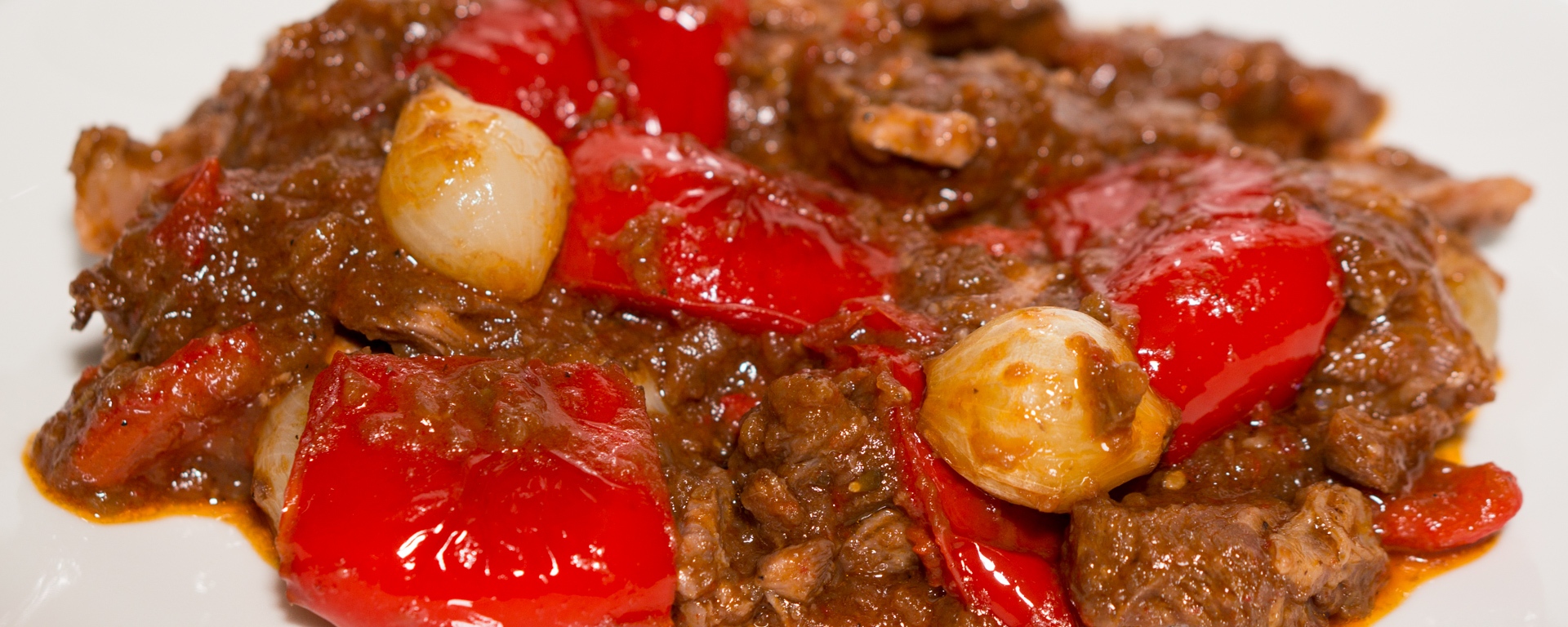



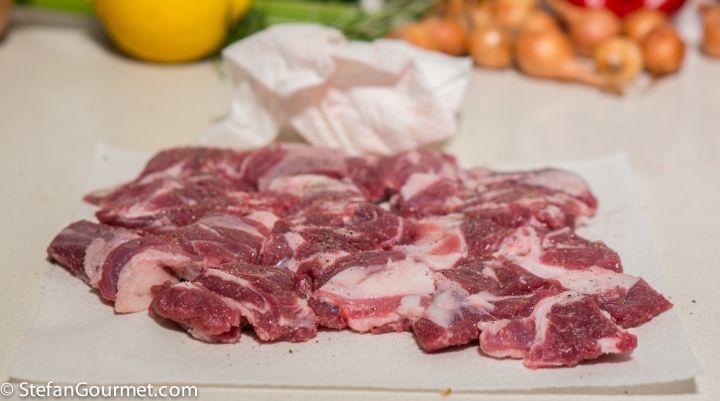



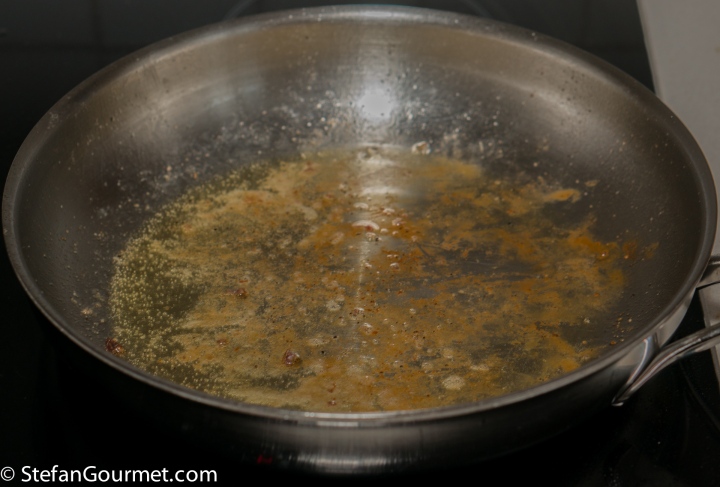






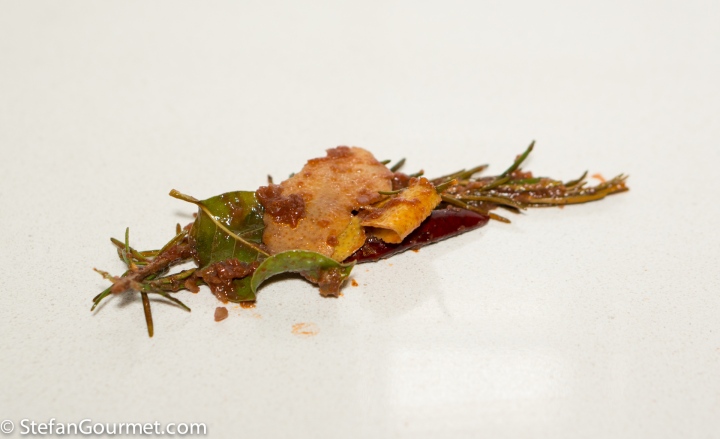






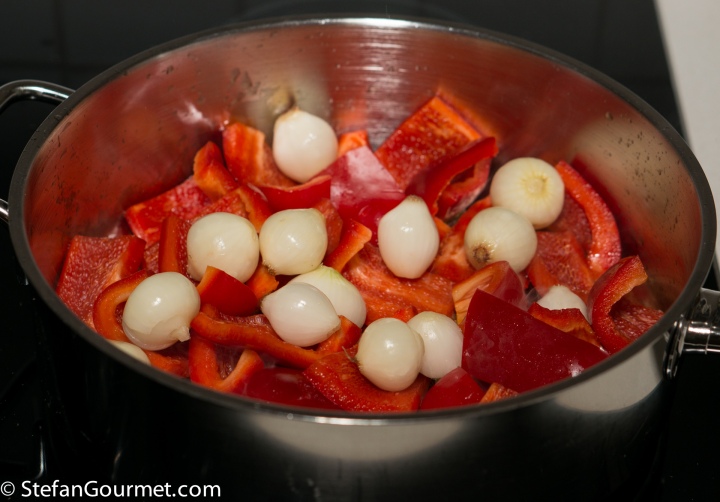







I tried goat in Portugal once and was presented with a large plate of… bone. The few other times I’ve tried it while traveling were equally uninspiring. I think the best way to enjoy it is at home, like you did. Looks just delicious!
LikeLiked by 2 people
There is a big difference between kid/capretto/cabrito and mature goat. I found the cuisine in Portugal to be very poor when I was there, and unlike the Italians they don’t seem to be able to turn something cheap into something very tasty.
LikeLiked by 1 person
So so true! We had a seafood dish served in a scallop shell that was so salty it was just inedible. Other meals were only marginally better. The pousadas were fabulous, though, and very reasonable.
LikeLiked by 1 person
Last week I read this: http://www.seriouseats.com/2016/01/stew-science-the-best-way-to-brown-beef.html About browning meat when making stew. Interesting. Not tried yet.
Furthermore I wonder, have you ever compared the usage of electricity when cooking sous vide? 24 hours vs 3-4 hours must make a big difference.
LikeLiked by 2 people
I’ve read Kenji’s post and have tried the different browning, but with lower sous-vide temperatures (below 65C/150F) it is not a good idea because browning on all sides helps to prevent funky smells that sometimes occur during long cooks at such temperatures. I guess it should be alright though at 74C/165F, but I didn’t think of that when I prepared this. What I did in this case instead is that I didn’t brown it so much that the cubes of meat would be dried out.
As for the usage of electricity: since my sous-vide appliance has good insulation it only uses about 60 watts once it has reached the target temperature, so that is 1.4 kWh for 24 hours. Cooking on the stovetop or in the oven would probably require a similar amount of energy. Besides, we have our rooftop filled with solar panels 🙂
LikeLiked by 1 person
Looks fantastic!
LikeLiked by 2 people
Well, this looks appetizing enough for me at last to put in an on line order for goat [yes, frozen also] . . . but to make freight worthwhile I’ll also order crocodile, emu, buffalo, wild boar and a few other ‘goodies’ : I guess I should say ‘thank you’. The goat is not cheap to my way of thinking at $20 a kilo, but once in a while . . . 🙂 !
LikeLiked by 2 people
That is actually quite a bit cheaper than what I paid (EUR 20 per kilo, so about $28 Australian). The other goodies sound great, too!
LikeLike
A fascinating post. I’m astonished that in the springtime you can’t get fresh kid (young goat), which has a much milder flavor than mature goat, so most people like it better. Besides, it’s still quite tender. In Petaluma, California, the female kids are allowed to grow to produce goat milk, but the males are sold quite cheap at the animal auction houses during the brief period when they’re all born. Almost all of them are barbecued and served as a great delicacy under the Spanish name “cabrito”, but they are also delicious roasted. A stew of lamb necks is a great favorite of mine, so i’m sure i’d love your stew, but mature goat is really hard to find in meat markets here because it doesn’t sell well.
LikeLiked by 2 people
It happens the same here. In spring they will also have capretto/cabrito (8 to 10 weeks old), but now I could only get chevon (5 to 7 months old). The latter is what I used, so not really mature goat. I’ve now clarified that in the post.
LikeLike
Many thanks for that clarification and for teaching me the name of the chevon.
LikeLiked by 1 person
Love this dish.
However, my absolute favorite goat dish is Jamaican curry goat.
While living in Jamaica, I had this at least once a week.
You might want to try that one day 🙂
Cheers
LikeLiked by 2 people
Actually the Jamaican goat curry is very similar to the Fijian one [Anglo-Indian influence ?], but instead of the scotch bonnets needed and the so-called Jamaican curry powder used, the chillies are usually medium-hot greens and the other dry ingredients are freshly combined at home by each cook . . .
LikeLiked by 1 person
I’ll look into it 🙂
LikeLike
I’ll look into it, thanks!
LikeLike
It’s an interesting comment you make about browning in a non stick pan. I have a “Woll” brand diamond finish non stick pan that gets super hot and is my all time favourite browning pan. I get great caramelization both on the meat surface and on the residue in the pan, it’s far more efficient than cast iron, stainless steel or aluminium. Stefan, try making an Indian curry with goat, after all, the mutton dishes you are served there are in fact mature goat, and delicious….
LikeLiked by 1 person
Interesting about the pan. Perhaps it depends on the type of non-stick, because in teflon I usually don’t get much browning on the residue (mostly because there is no residue at all).
Good idea to make an Indian curry with goat!
LikeLike
You can buy it here also: https://www.okvlees.nl/bijzonder-ok/category/112-geit-chevon. Or ask for it at your mediterrean (muslim) buther. I often wondered why goat’s meat is so (relatively) expensive. I think it’s the same with cockels (kokkels). We, the Dutch, don’t know it, so we don’t eat it. It’s a pitty. But I sure gonna try this. Sounds great!
LikeLiked by 1 person
I’ll first have to find another/better Turkish butcher, because the lamb they sold me here was actually sheep and both tasteless and tough.
LikeLiked by 2 people
I got good lamb from a Moroccan butcher on Haarlemmerstraat. Can’t remember the address, but it was on the south side of the street not far from Buiten Browersstraat and i quite liked the proprietor.
LikeLiked by 1 person
Grazie per l’Abruzzo 🙂
LikeLiked by 1 person
Looks delicious!
LikeLiked by 1 person
A while ago I found some crosscut goat shanks at the halal section of my local ethnic market. Used them to make “osso capra.” Came out great. It’s amazing how thin the bone is – just over a centimeter in diameter.
Now I have to make it sous vide.
LikeLiked by 1 person
The shank is also great for 48 hours at 62C/144F. By the way, the “buco” in osso buco refers to the hole in the bone. In Italian it’s called stinco di capra.
LikeLike